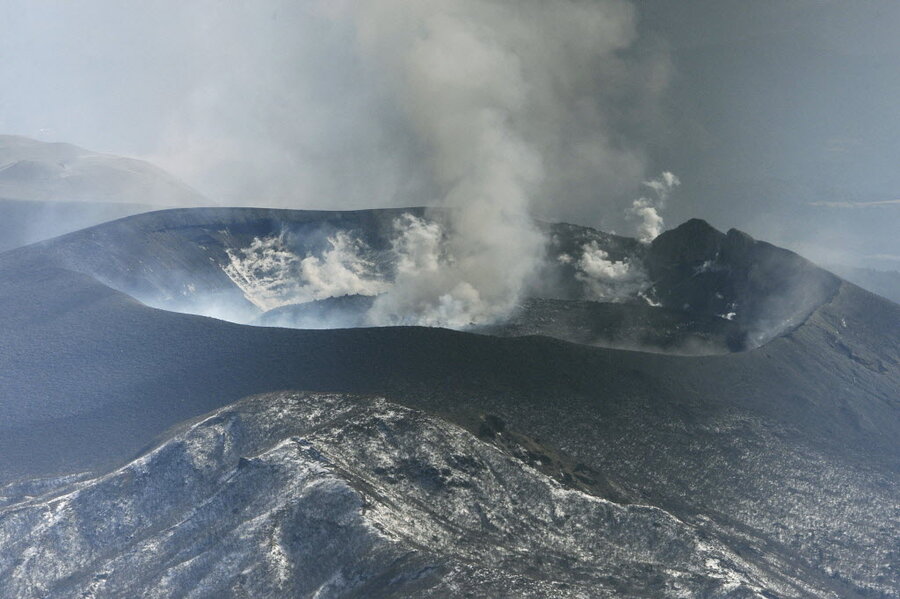Duel of the natural disasters: Earthquakes cause volcanos to shrink
Loading...
Earthquakes: 1; Volcanoes: 0.
The earthquakes that roiled Japan in 2011 and Chile in 2010 caused several volcanoes in both countries to slink down some 6 inches, scientists found. The findings complicate existing theories that earthquakes tend to deliver a jolt to volcanoes, potentially trigging an explosive second act.
In 2010, an 8.8-magnitiude earthquake in central Chile killed some 600 people, sending tremors down the east South American spine and pummeling fisheries from California to Japan. A year later, a 9.0-magnitude ripped through Japan itself – the most powerful earthquake to ever impact the fault-ribbed country – killing about 16,000 people and causing some $235 billion in damages. That made it the costliest natural disaster in world history, in terms of dollars.
In both countries, scientists had expected that the massive earthquakes would herald another disaster: volcanic eruptions, which have long been associated with big quakes. The tremors and volcanoes, it was believed, would conspire with each other to deliver a cruel double whammy to the already reeling people inhabiting those unstable zones. And so the scientists had looked at those strings of volcanoes looking for signs of empowerment: magma bubbling underneath, gurgling expectantly during a brief intermission between disasters.
But no eruptions occurred.
And what the scientists found in both countries were not burgeoning volcanoes, but droopy, disappointed ones. Looking at satellite footage of the deformed ground around the volcanoes both before and after the earthquake, scientists found that the earthquakes had not emboldened the volcanoes – they had humbled them.
Both teams, who worked independently, have different explanations for why the earthquakes caused the volcanoes to shrug down some six inches. But both groups of scientists agree that the two events are linked, and further investigation into the issue could help researchers better predict what to expect from post-earthquake volcanoes, scientists said.
“It's amazing, the parallels between them," said Matthew Pritchard, a geophysicist at Cornell University in Ithaca, N.Y., and lead author of the Chilean study, told LiveScience. "I think it makes a really strong case that this is a ubiquitous process."
The scientists who investigated the Chilean earthquake and the nearby volcanoes propose that the seismic activity uncorked underground fissures and released pent-up hydrothermal fluids near the volcanoes. As those bottled fluids were uncapped, so-to-speak, the ground sank, like a punctured balloon at a party to which the guest-of-honor never arrived.
The scientists that studied the Japanese earthquakes pin the failure-to-launch elsewhere – on the deflating of the magma chambers in the hot rock under the volcanoes, in response to stress changes from the earthquake.
Earthquakes do often trigger volcanic eruptions, but these latest findings suggest that certain conditions must exist in the volcano if it is to ride the earthquakes’ energy toward an eruption – otherwise, the earthquake could inhibit the volcano’s potential boom.
"Basically, the volcanic system has to be primed and ready to go for the earthquake to tip it over the edge," Pritchard told LiveScience. "If, by chance, no volcanoes are close to that point, no volcanic eruptions are triggered [after an earthquake]," he said.
When that volcano is in fact prepared to blast, the consequences of an earthquake can be devastating. In 2006, the 6.4-magnitude earthquake that rocked Indonesia's Java Island ushered in two volcanic eruptions about three days afterward. In that case, the earthquake worked like a pump, forcing underground magma to spurt upwards. Thousands of people had to be evacuated from the volcanic slopes.








